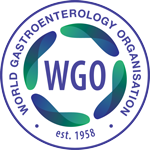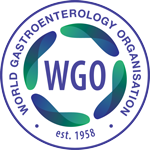Risk factors for Crohn’s disease – get a dog, get rid of the pet bird!
Review by Prof. Eamonn Quigley (USA)
Study Summaries
Crohn’s disease is increasing in incidence worldwide and in North America and Western Europe now outstrips ulcerative colitis as the most prevalent form of inflammatory bowel disease (IBD). While the precise cause(s) of Crohn’s disease remain(s) to be defined it is widely believed that its occurrence represents the intersection of genetic and environmental factors. A host of genetic mutations and polymorphisms have been linked to Crohn’s disease with many of the loci coding for factors involved in the host immune response and that to the gut microbiome, in particular. Thus, the emergence of what has been referred to as “the etiologic triad” to explain the pathophysiology of Crohn’s disease: genetics, the immune system and the environment. Two recent papers, one a provocative opinion piece in Gastroenterology, the other a large population-based study in Clinical Gastroenterology and Hepatology encourage us to give more thought to the role of environmental factors.
The opinion piece bemoans the fact that virtually all efforts at developing new therapies for Crohn’s disease have, of late, focused on the immune system to the virtual exclusion of the other modifiable member of the triad – the environment. Furthermore, they point out that despite all the wonderful immunology that has given us so many biologics targeted at many steps in the inflammatory cascade, these agents either individually or collectively leave a lot to be desired and fail a considerable percentage of our patients either in terms of initial remission or durable response. These authors appeal, therefore, for more efforts in the development of interventions that modify the environment and suggest that the gut microbiome and diet might well be the best places to start.
The second study comes from the Crohn’s and Colitis Canada – Genetic, Environmental, Microbial project and prospectively studied 4,289 healthy first-degree relatives of patients with Crohn’s disease. These individuals were followed for a median of 5.62 years during which time 86 developed Crohn’s disease. They then examined environmental and biological parameters (intestinal permeability, inflammation - as measures by fecal calprotectin, and the gut microbiome) in a search for risk factors for the development of Crohn’s disease. Among environmental factors, three stood out – two, living with a dog and being part of a large family during the first year of life were protective while, one, living with a bird increased the risk of Crohn’s disease. Furthermore, living with a dog was associated with intact intestinal permeability and an altered microbiome while living with a bird was associated with sub-clinical inflammation.
Commentary
These papers provide a wake-up call for all of us who care for patients with Crohn’s disease and urge us to give more attention to the environment in management and even prevention. The findings with regard to family size and living with a dog may initially seem bizarre but on reflection are scarcely surprising given the well-documented description of the protective effects of intense cohabitation and contact with animals against immune-mediated disorders, an effect that may be generated via the microbiome.
Citation
Behr MA, Mehes I, Bernstein CN. It’s time to change tack in IBD treatment. Gastroenterology 2024; 167:1065-70.
Xue M, Leibovitzh H, Jingcheng S, et al. Environmental factors associated with risk of Crohn’s disease development in the Crohn’s and Colitis Canada – Genetic, Environmental, Microbial Project. Clin Gastroenterol Hepatol 2024; 22:1889-97.
View past News You Can Use commentaries

